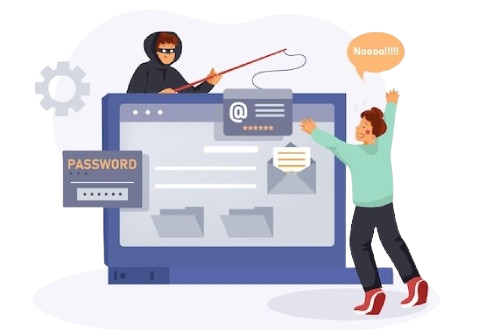In our current technology-focused environment, the speed at which cybersecurity threats are advancing is remarkable, with phishing emerging as one of the most insidious and harmful methods. Phishing techniques, ranging from well-crafted emails to fake websites, have become more intricate, affecting both individuals and businesses.
The repercussions can be dire, leading to data leaks, monetary losses, and erosion of customer confidence. To counteract this escalating threat, organizations need to take proactive measures by embracing effective phishing defense strategies and utilizing strong tools that can prevent, identify, and address these risks instantly.
The Rising Threat of Phishing in the Modern Digital Era
In recent years, phishing attacks have surged dramatically, now representing more than 90% of global data breaches. These attacks exploit social engineering techniques to deceive individuals into disclosing sensitive information, such as passwords, financial information, or personal details. Cybercriminals employ methods like email spoofing, harmful attachments, and counterfeit login pages to circumvent conventional security measures.
Although antivirus programs and firewalls remain essential, they are inadequate by themselves. Effective phishing protection requires a comprehensive strategy that integrates user training, continuous monitoring, and sophisticated detection technologies.

Why Traditional Defenses Aren’t Enough Anymore
Fundamental security measures such as spam filters and firewalls establish a crucial baseline; however, sophisticated phishing emails frequently evade these protections by employing convincing language and masked links. Additionally, zero-day phishing sites — newly launched webpages that have not yet been flagged — further complicate the effectiveness of traditional security tools.
As a result, organizations must enhance their cybersecurity strategies by integrating behavioral analysis, artificial intelligence-based detection, and ongoing employee training to create a robust defense system.
Building an Effective Phishing Protection Strategy
Developing an effective anti-phishing approach goes beyond merely implementing technical solutions; it necessitates a change in culture that emphasizes awareness and proactive measures. Let’s examine some essential elements.
Employee Education and Awareness Training
Your workforce serves as the initial barrier against cyber threats. By training them to recognize the indicators of phishing scams — like unsolicited attachments, pressing demands, and atypical sender addresses — you can significantly lower the chances of falling victim to these attacks.
Conducting frequent phishing drills can bolster this knowledge, pinpoint at-risk individuals, and foster a culture of security awareness throughout your company.
Implement Multi-Factor Authentication (MFA)
Regardless of whether an employee's credentials are breached, multi-factor authentication (MFA) provides an essential safeguard. By necessitating an additional verification method, such as a text message code or biometric scan, MFA greatly diminishes the chances of unauthorized entry.
MFA must be enforced for all remote access locations, administrative accounts, and systems that manage sensitive information.
Use Advanced Email Filtering and Threat Detection
Contemporary email security solutions leverage artificial intelligence and machine learning to identify unusual patterns, links, and file attachments. These technologies can instantly recognize phishing threats and isolate them before they can be accessed by the recipient.
Seek out services that provide features like URL rewriting, attachment sandboxing, and real-time threat intelligence updates to keep pace with changing strategies. To discover more, just click on the link.

Top Tools for Phishing Protection in 2025
A variety of sophisticated tools and platforms are assisting organizations in identifying and addressing phishing threats more efficiently. Below are some of the most reliable options available:
- Microsoft Defender for Office 365: This all-encompassing email security solution offers real-time defense against phishing, malware, and zero-day vulnerabilities. Its features, Safe Links and Safe Attachments, are particularly adept at neutralizing harmful content.
- Proofpoint Email Protection: Renowned for its detailed filtering and threat intelligence capabilities, Proofpoint provides a robust set of tools to identify email-based threats, including targeted phishing attacks and business email compromise (BEC).
- KnowBe4: This platform emphasizes training for security awareness and conducts simulated phishing exercises. KnowBe4 aids organizations in evaluating user risk, providing tailored education, and monitoring progress over time.
- Cofense PhishMe: A sophisticated tool for phishing simulation and reporting that integrates effortlessly with your current email system. Cofense enables users to swiftly identify and report phishing attempts, supplying data back to IT teams for immediate response.